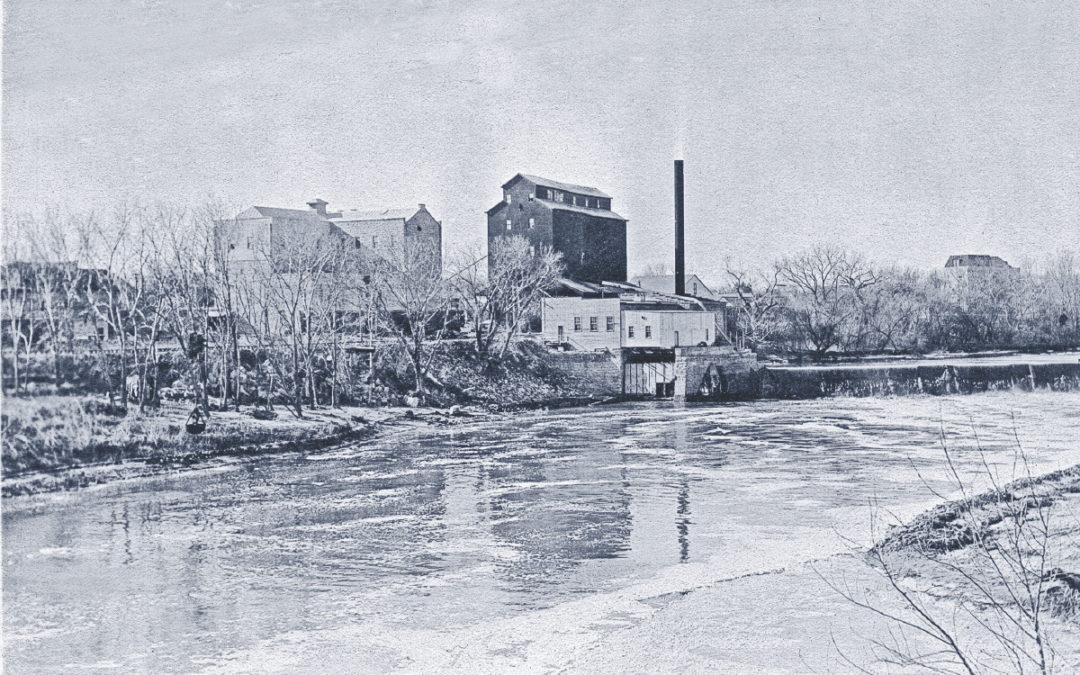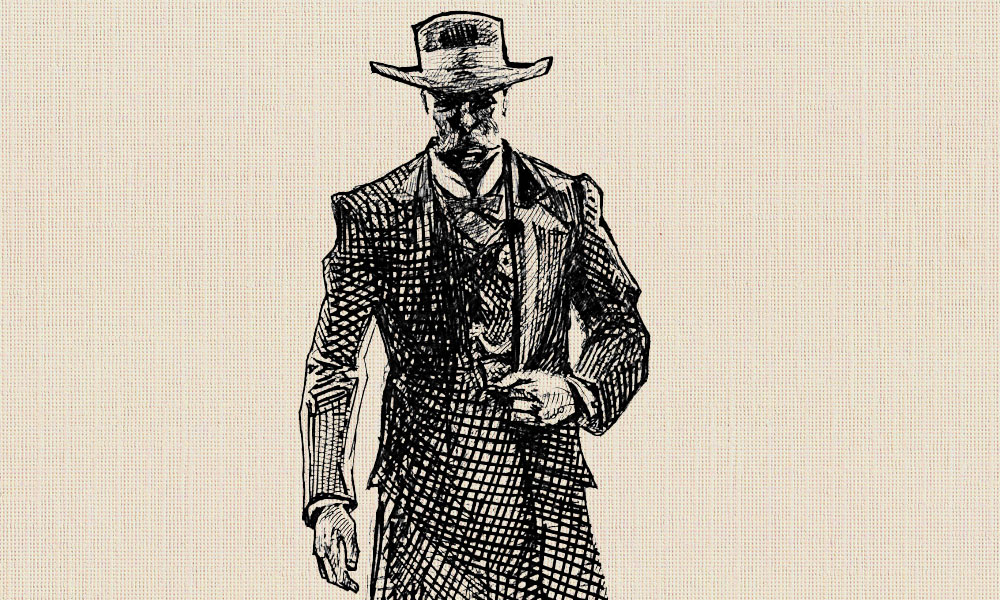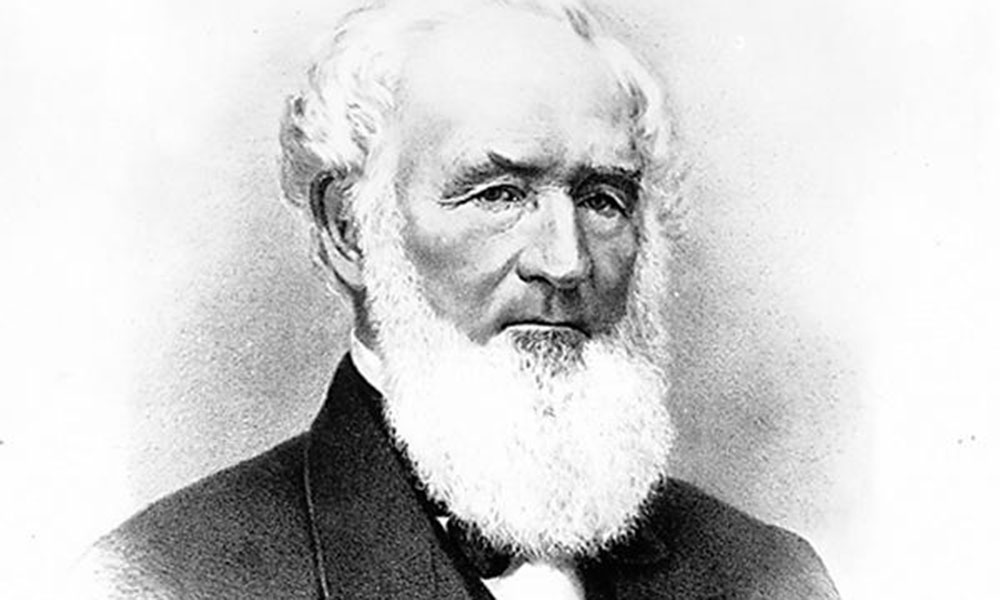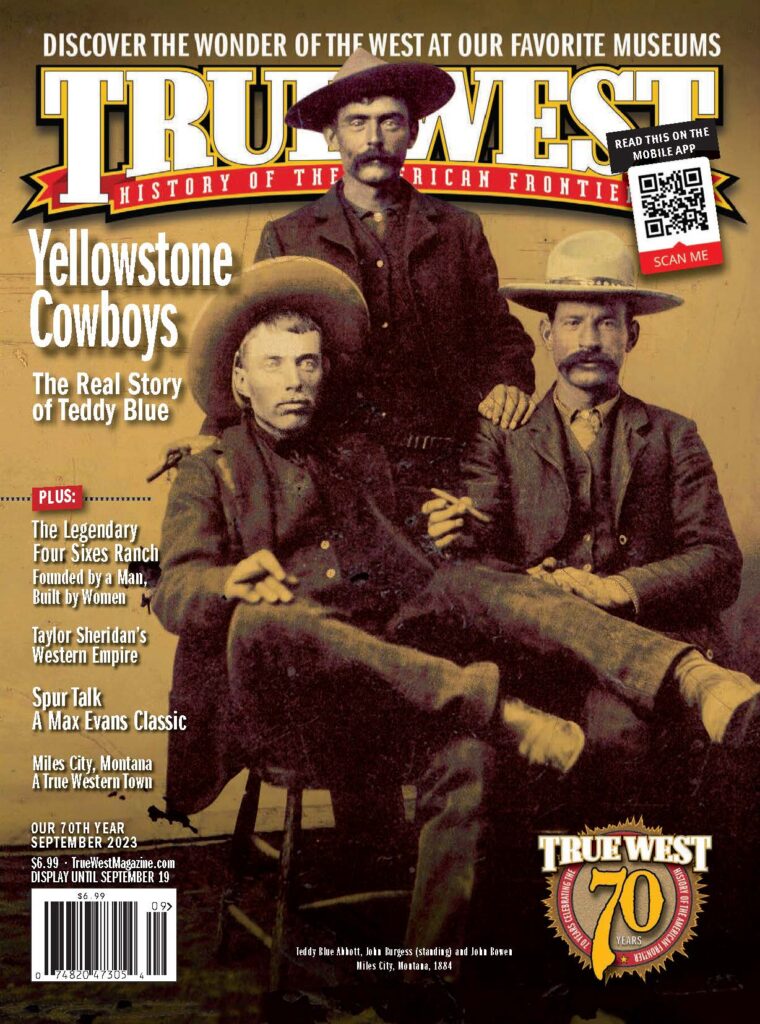Kansas is still the breadbasket of America.
Kansas pioneers knew their land was perfect for growing corn and wheat and an abundance of beautiful yellow sunflowers. While Kansans harvested wheat very early on, production statistics weren’t tracked until 1866. That same year about 1,300 bushels of wheat were produced. Twenty years later, the number increased to 15,000, and by 1900 it jumped to 78,000. Turkey Red wheat, an ancestor of much of the wheat grown in Kansas, is believed to have been brought over by Russian immigrants in the 1870s, and it did very well.
Due to the amount of wheat being grown in Kansas, it’s not surprising that flour and grain mills were abundant across the state. Two companies with historic ties remain in business today.
Hoffman Grist Mill was started by Swiss immigrant Christian Hoffman, who emigrated to America in 1855. He moved to Kansas two years later and opened his mill in 1869 along the banks of the Smoky River in what was called Loudon Falls. By 1872 the area became the town of Enterprise, where his mill grew rapidly and merged with many other mills. Hoffman was a pioneer in using Turkey Red wheat and was one of the first to use it in Kansas. He shared this in 1900, “Experience soon demonstrated that it was a hardy wheat, resisting drought and dry weather… It became apparent to our firm that it was worthy of a careful test as to its milling and bread making qualities. Such tests were made, and we found it was far superior.”
Hoffman’s shipped flour around the world until 1929 when it went out of business. In 2016, the mill was revived at a nearby location where the same historic Turkey Red wheat is milled today using historic equipment similar to what Hoffman used.
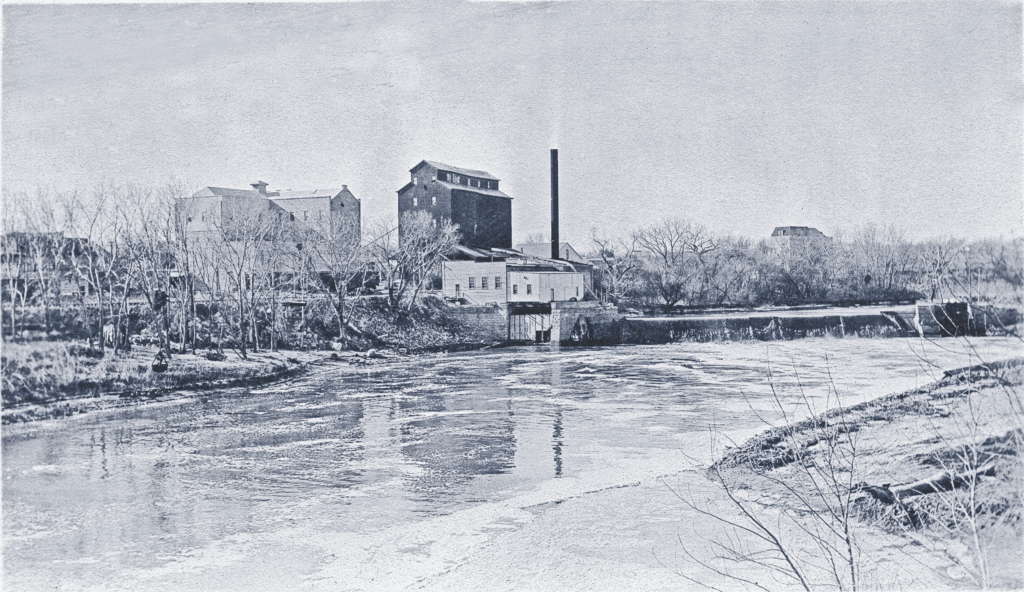
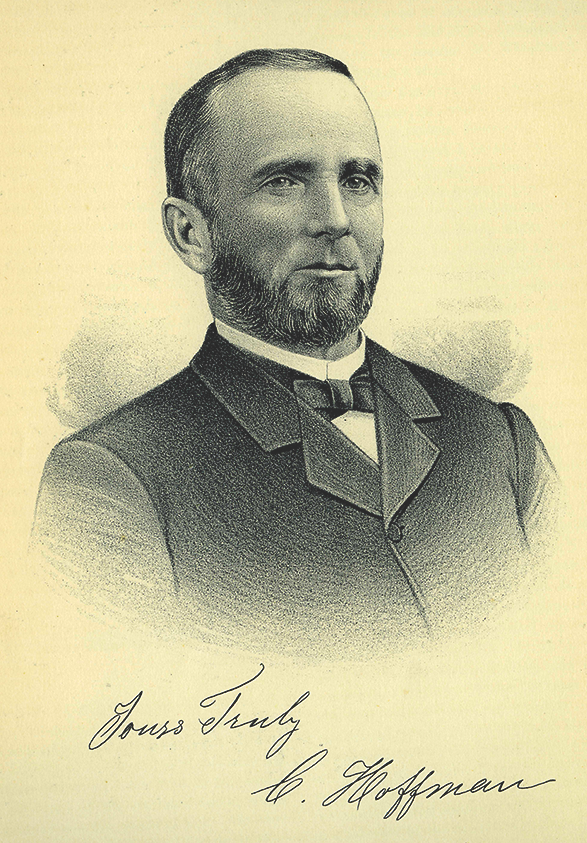
The Hudson Milling Company was started by Gustav Krug in 1904 in Hudson. The company was reorganized due to financial problems in 1909 and became the Stafford County Flour Mills. It was known for Hudson Cream flour and an illustration of a Jersey cow on its bags. Many pioneers believed that the Jersey cow produced the best milk and cream, so Krug incorporated it and the word “cream” to symbolize the white richness and smooth texture of his flour. The company continues the tradition today.
Sunflowers are abundant in Kansas. During early frontier days, pioneers used sunflower seeds and oil for a variety of things, including chicken feed, shampoo and cough elixirs. Around 1879 Kansas newspapers reported that Russia was creating a palatable oil from sunflowers. During the 1890s the idea of using the seeds for human consumption began to emerge. While some home cooks experimented with the seeds and oil, use wasn’t widespread. The Democratic Messenger in Eureka, Kansas, reported, “The use of sunflower seeds for food is suggested. Confections and other articles of diet made from this food will soon be placed before the public. Who knows but that we may find in this product a welcome addition to our present food supply?”
One young Kansas woman, who wasn’t impressed with sunflowers, went to her local market in May 1879 to get some flower seeds. The clerk told her he had some beautiful seeds to choose from and that some of them were the nicest climbers and would cover her house by July. A Leavenworth newspaper printed the story. The clerk said they “will make it look almost like paradise.” She confirmed what he said, and he added, “Yes, they will. You don’t know how they will improve the looks of your house.” Upon hearing that, she replied, “But I won’t take any. Just as soon as they made the old house look any better the landlord would [come] around and raise the rent on us. I guess I won’t buy anything but sunflower seeds and a stalk or two of catnip.”
Sally Lunn Bread
1 packet active dry yeast
2½ c. heritage wheat flour • 1 c. milk
3 tbsp. butter, cut into small pieces
1 tbsp. sugar • ½ tsp. salt • 1 egg
Place milk in a saucepan and heat to 120°-130°F. Transfer to a large bowl and add the yeast and stir until dissolved.
Add remaining ingredients and beat with a spoon until dough pulls cleanly away from the sides of the bowl and is smooth. Loosely cover the bowl with plastic wrap and let the dough rise in a warm place about 1 hour or until doubled in size.
Grease or spray a loaf pan. Stir down dough with a spoon and pour into pan. Cover with plastic wrap; let it rise in a warm place about 30 minutes or until dough is about 1 inch below the top of the pan.
Bake loaf at 350°F for 25 to 30 minutes or until golden brown. Immediately remove from pan using a knife to loosen edges. Serve with butter.
Recipe adapted from
The Kansas Home Cook-Book, 1874.

